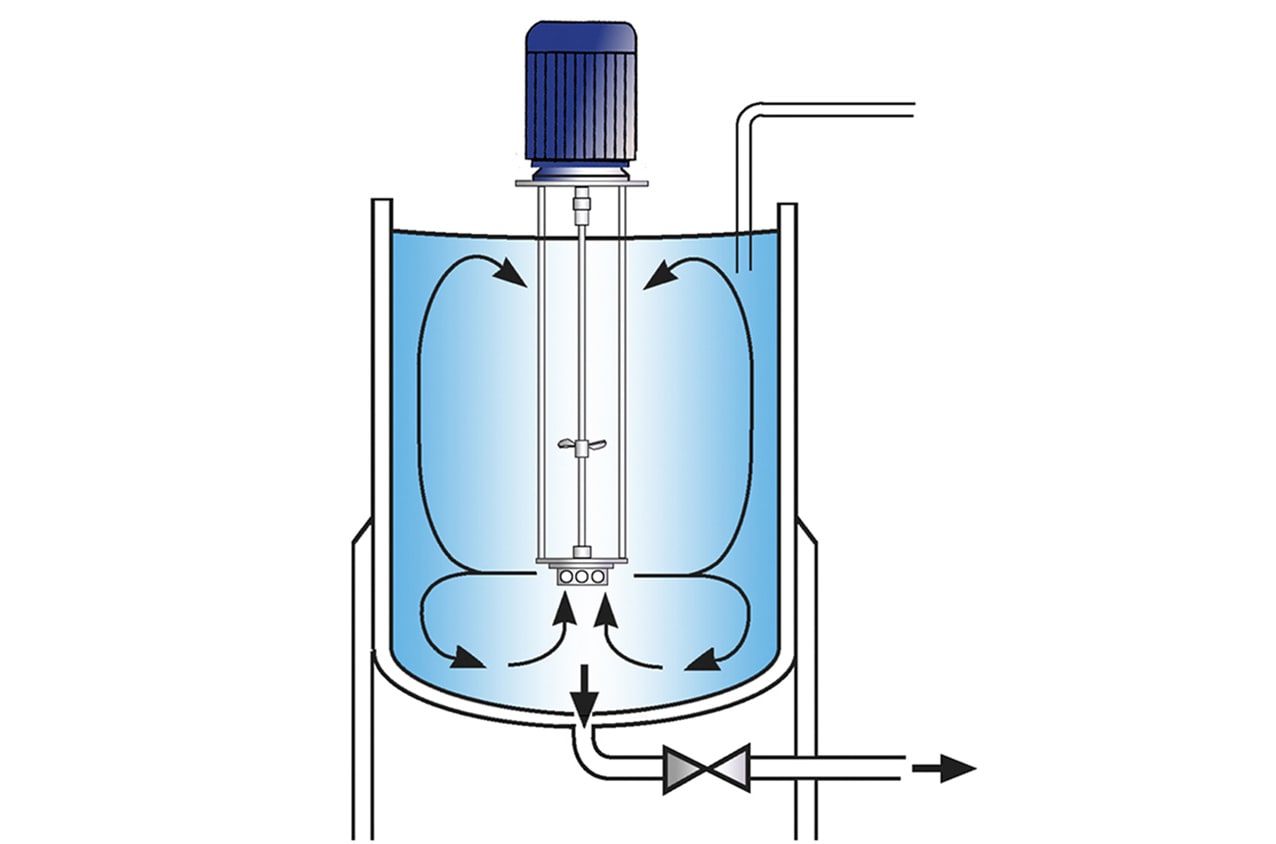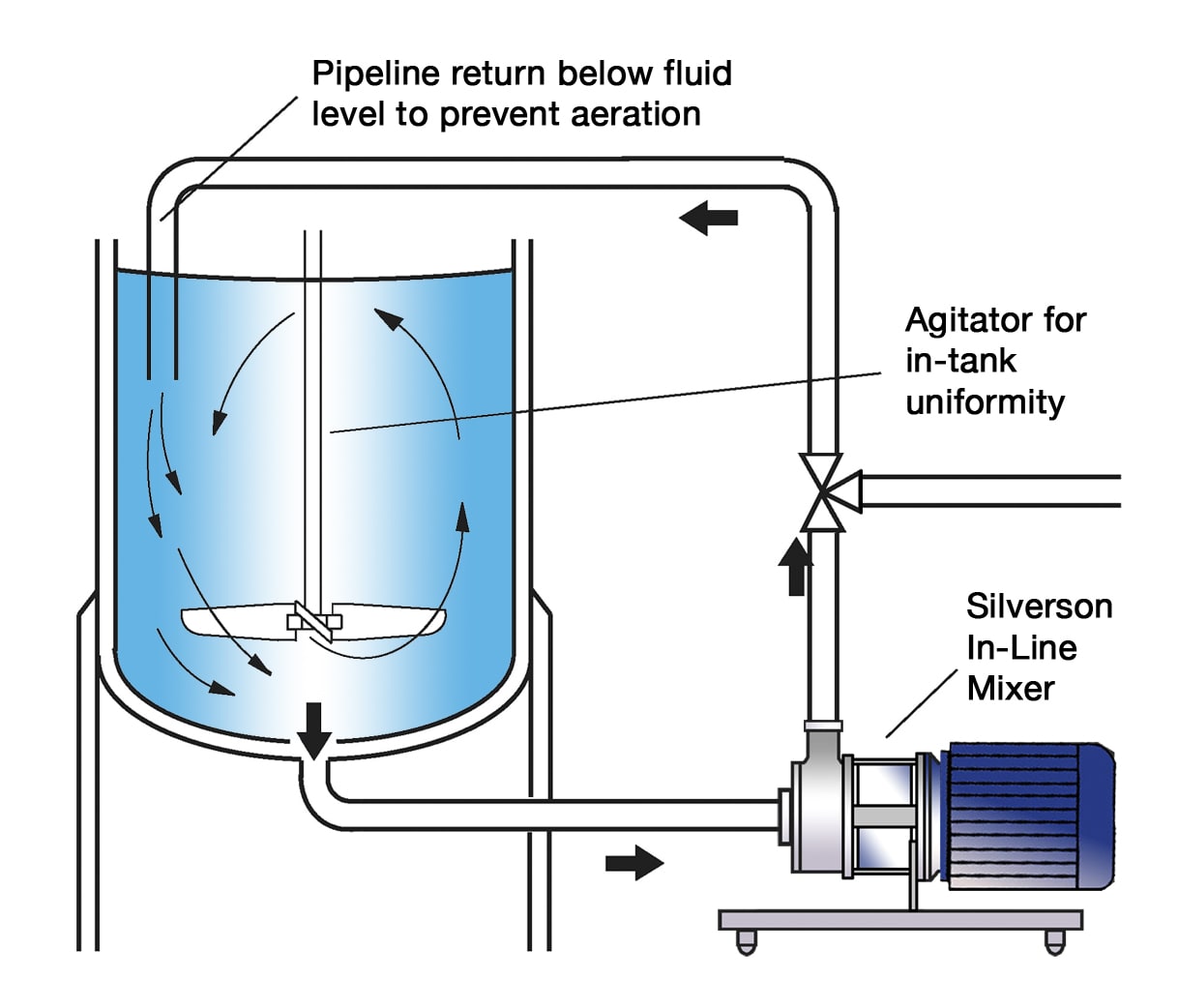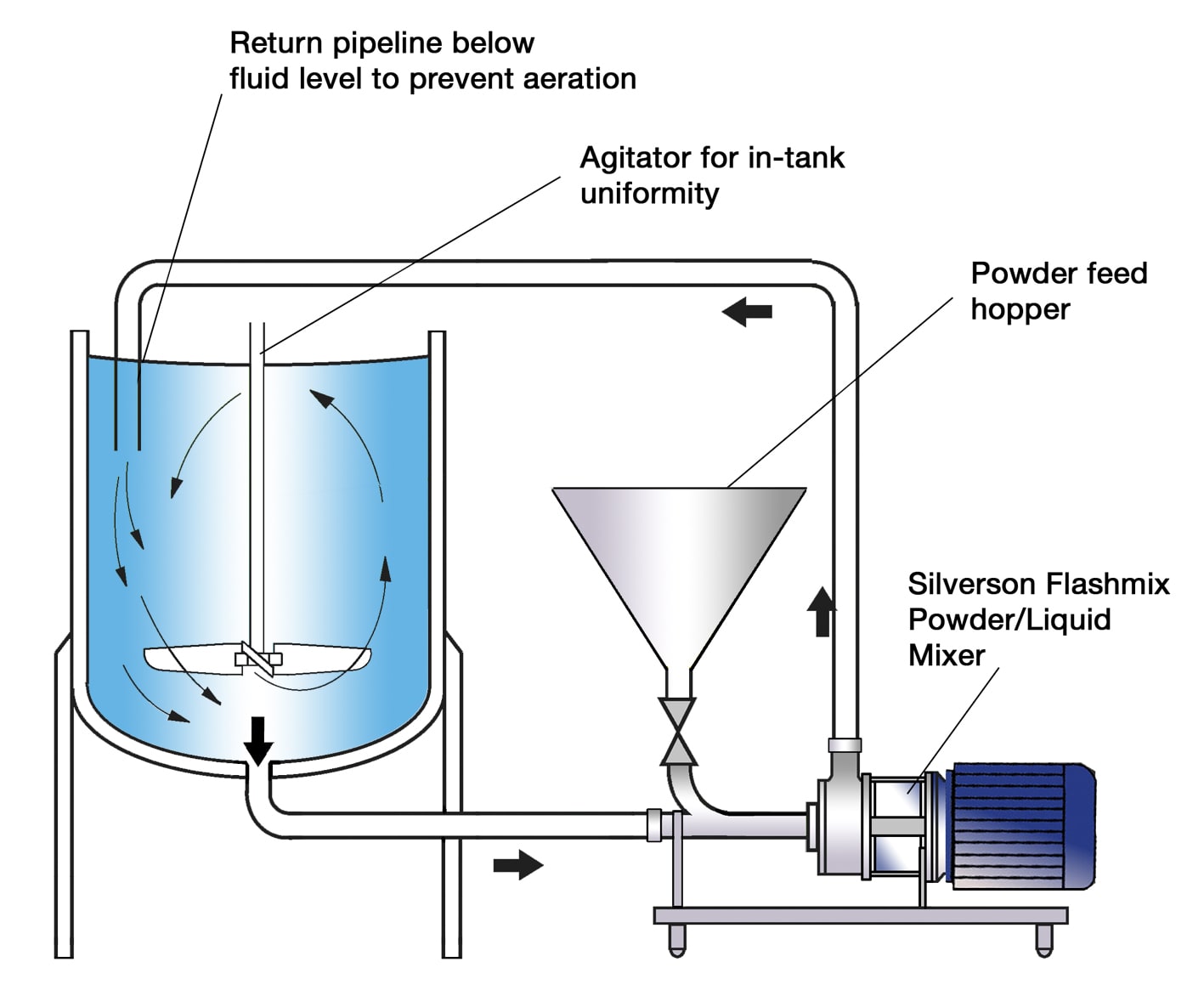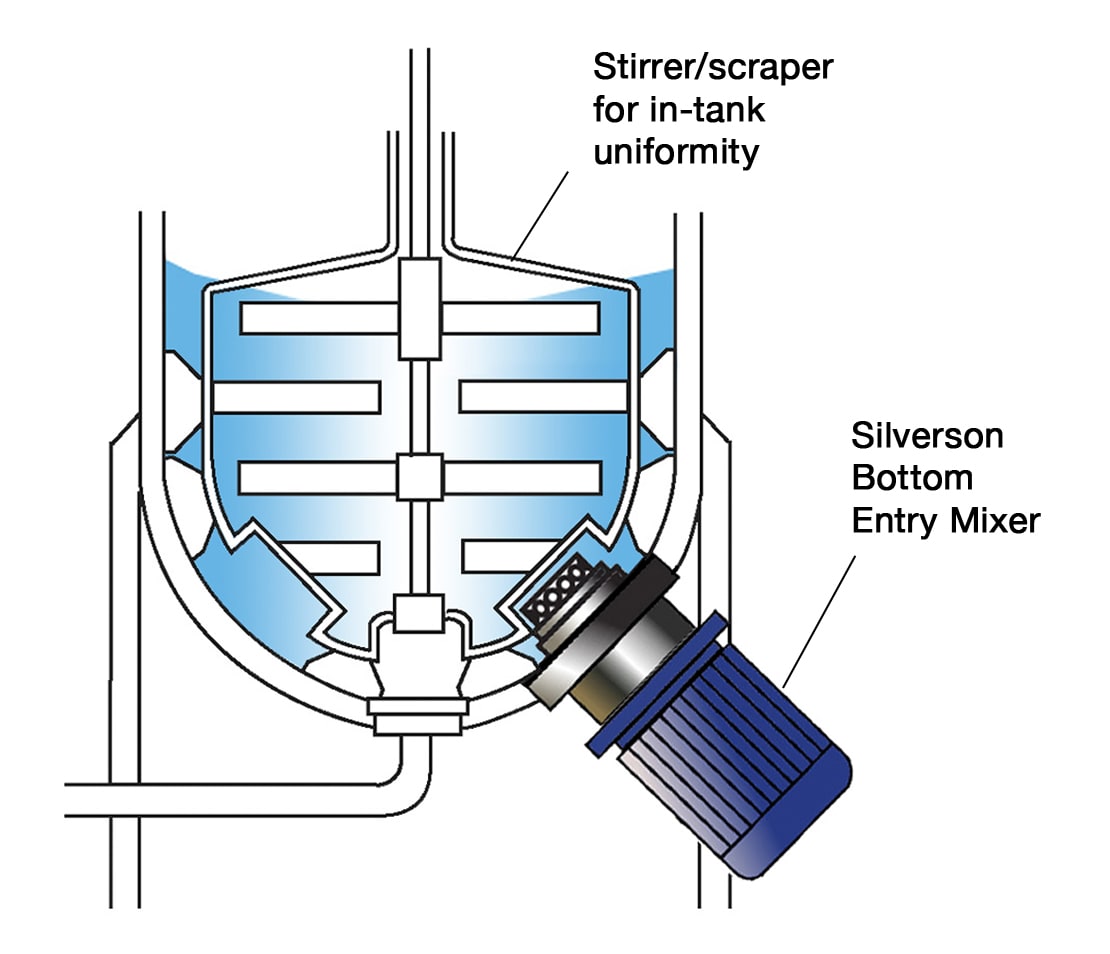Production of Cosmetic Creams and Lotion
Cosmetic cream and lotion are used for a variety of purposes such as cleansing and moisturizing. The ingredients of these will be different according to the desired use, however to some extent the basic manufacturing process is the same.
The Process
Products can be either an oil-in-water or water-in-oil emulsion, consisting of emollients and lubricants dispersed in an oil phase, and a water phase containing emulsifying and thickening agents, perfume, color and preservatives. Active ingredients are dispersed in either phase depending on the raw materials and the desired properties of the end product. A typical manufacturing process would be as follows:
- Flake/powder ingredients, such as cetyl alcohol and stearic acid, sometimes dry blended in advance, are dispersed into the oil phase. Heating may be required to melt some of the ingredients.
- Active ingredients are dispersed in the appropriate phase.
- The water phase, containing emulsifiers and stabilizers such as Veegum® or Carbopol®, is prepared separately.
- The two phases are then mixed to form an emulsion. This is aided by heating to between 110 - 185℉ (45 - 85℃) depending on the formulation and viscosity.
- Mixing is continued until the end product is homogeneous.
The Problem
Using conventional agitators a number of problems can be encountered:
- Some ingredients can form agglomerates which conventional agitators cannot break down.
- Hydration of thickening and suspending agents is one of the most difficult of all mixing operations. Agglomerates can easily form and some ingredients require shear in order to develop their desired properties.
- When adding powdered ingredients to the vessel, partially hydrated materials can build up on the vessel wall and parts of the agitator.
- Agitators cannot easily form stable emulsions even when the oil and water phases have been heated.
- Long process times and additional equipment are often required to achieve a homogeneous product.
The Solution
Intermediate stages of production can be eliminated, product quality improved and processing times dramatically reduced by using a Silverson High Shear mixer. The advantages of the Silverson High Shear mixer stem from the 3 stage mixing/shearing action generated by the precision machined workhead. Operation is as follows:
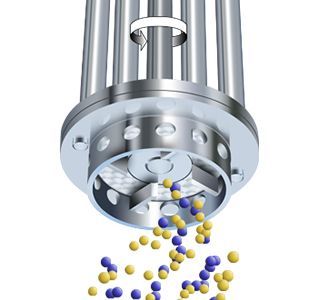
Stage 1
The vessel is charged with the “continuous” phase. The Silverson mixer is started, and the solid/powdered ingredients are then added. The powerful suction created by the high speed rotation of the rotor blades draws both liquid and solid ingredients into the workhead where the are rapidly mixed.
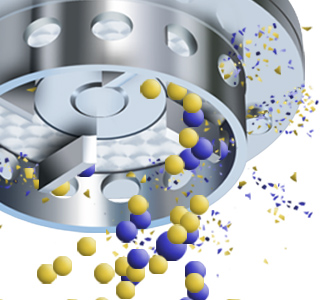
Stage 2
The solids are broken down in the precision machined rotor/stator workhead. The micronized powders and other ingredients are fully dispersed into the liquid before being forced out through the stator and circulated into the body of the mix. At the same time fresh material is drawn into the workhead.
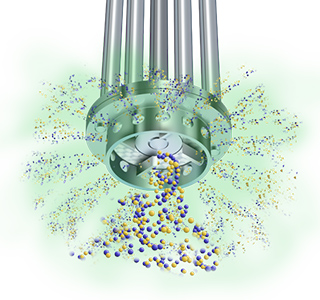
Stage 3
Once the powdered ingredients have been fully dispersed in the “continuous” liquid phase, the “dispersed” phase can be added to form the emulsion. The high shear mixing action of the rotor/stator workhead ensures that the emulsion is uniform and stable.
-
Stage 1

Stage 1
The vessel is charged with the “continuous” phase. The Silverson mixer is started, and the solid/powdered ingredients are then added. The powerful suction created by the high speed rotation of the rotor blades draws both liquid and solid ingredients into the workhead where the are rapidly mixed.
-
Stage 2

Stage 2
The solids are broken down in the precision machined rotor/stator workhead. The micronized powders and other ingredients are fully dispersed into the liquid before being forced out through the stator and circulated into the body of the mix. At the same time fresh material is drawn into the workhead.
-
Stage 3

Stage 3
Once the powdered ingredients have been fully dispersed in the “continuous” liquid phase, the “dispersed” phase can be added to form the emulsion. The high shear mixing action of the rotor/stator workhead ensures that the emulsion is uniform and stable.
The Advantages
- Consistent product quality and repeatability.
- Agglomerate-free mix.
- Stable emulsion.
- Rapid mixing time.
- Maximized yield of raw materials as thickening agents are fully hydrated and other ingredients fully dispersed.
There are a number of machines in the Silverson product line used for this application, the suitability of which is dictated by individual processing requirements, including batch size, formulation and viscosity of the end product:
High Shear Batch Mixers
- Suitable for batch sizes up to 400 US gallons
- Can be used on mobile floor stands
- Sealed units available for pressure/vacuum operation
- Small units available for R&D and pilot production
High Shear In-Line Mixers
- Ideal for larger batches
- Aeration free
- Easily retrofitted to existing process
- Self-pumping
- Can be used to discharge vessel
- Multistage units available
- Ultra Sanitary units available
- High Viscosity models available
Silverson Flashmix
- Suitable for higher viscosity mixes
- Ideal for larger batches
- Capable of rapidly incorporating large volumes of powders
- Minimized aeration
- Minimized cleaning requirements
- Minimum operator input required
- Easily automated
High Shear Bottom Entry Mixers
- Generally used in conjunction with an anchor stirrer/scraper
- Suitable for use on high viscosity products - gels, deodorant sticks or those that increase in viscosity or solidify on cooling
